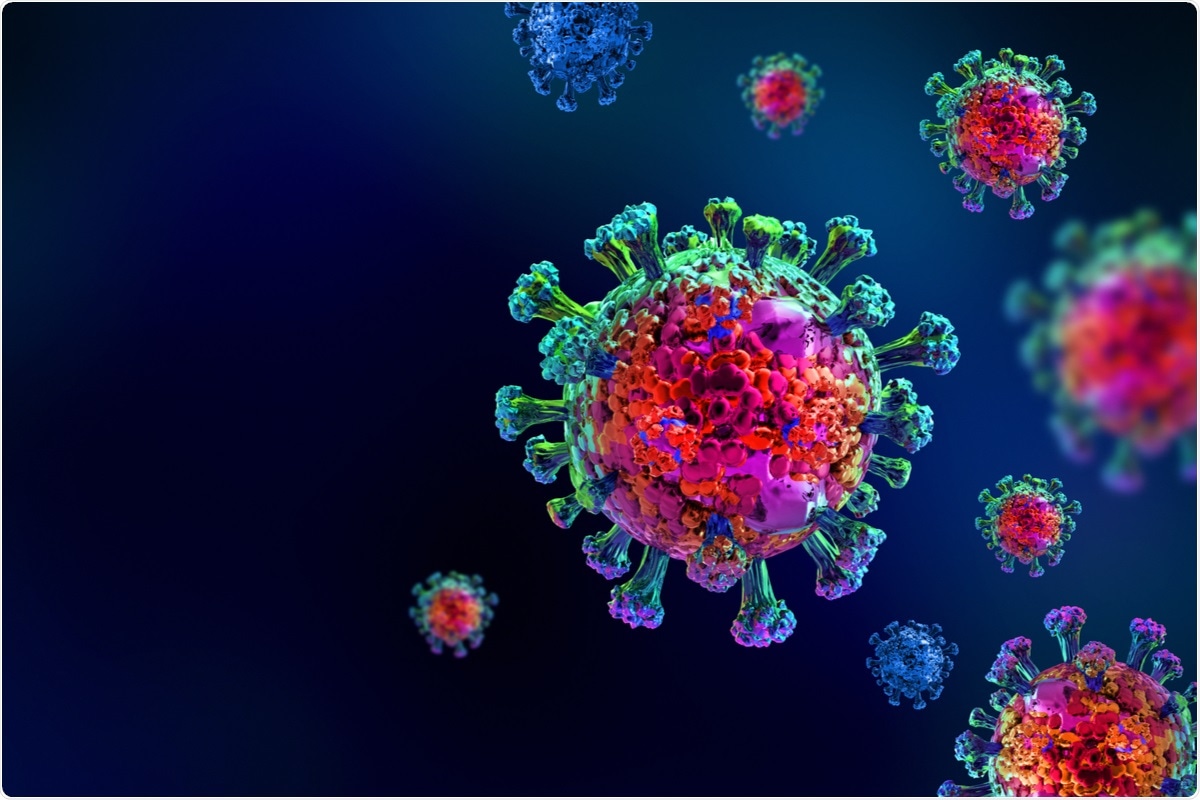Coronavirus disease 2019 (COVID-2) has had devastating worldwide effects on public health and economies. While global vaccination schemes are currently beginning to control the spread of the disease, there are worries that immunity wanes. These worries are exacerbated by the rise of variants such as the Delta strain, which are known to evade immunity from previous infection by the initial strain of severe acute respiratory syndrome coronavirus 2 (SARS-Cov-2).
 Study: Aligning staffing schedules with testing and isolation strategies reduces the risk of COVID-19 outbreaks in carceral and other congregate settings: A simulation study. Image Credit: stockklemedia/ Shutterstock
Study: Aligning staffing schedules with testing and isolation strategies reduces the risk of COVID-19 outbreaks in carceral and other congregate settings: A simulation study. Image Credit: stockklemedia/ Shutterstock
Many countries introduced heavy restrictions, including social distancing measures, mandatory face masks, and even quarantines and lockdowns. These caused mass economic crises as businesses struggled to respond. As countries begin to examine the possibility of re-introducing these measures, researchers from the University Of California have examined the factors that caused the most significant outbreaks in congregate settings such as care homes and prisons.
A preprint version of the group’s study is available on the medRxiv* server while the article undergoes peer review.
The study
Most tests target the spike protein of SARS-CoV-2. The spike protein is key to the pathogenicity of the disease. The receptor-binding domain (RBD) of the S1 subunit binds to angiotensin-converting enzyme 2 (ACE2), which allows viral entry. At the same time, the N-terminal of the spike protein allows for membrane fusion. Targeting the RBD is most common for vaccines, as it allows neutralizing antibodies to target the disease and prevent it from entering cells. Antibodies generated from natural immunity will normally target these areas of the spike protein or the nucleocapsid or envelope proteins, which is ideal for testing.
The researchers modeled SARS-CoV-2 transmission over time using an infectious profile generated from key biological parameters over time. While the high transmission rates during the asymptomatic phase of the disease make modeling challenging, the peak infectivity tends to coincide with the onset of symptoms if they do appear. This allowed the scientists to model the expected new cases generated at an individual at a particular time.
They also took into account the potential for isolation of infected individuals and the likelihood of contact tracing. They found that the relationship between the time following infection at which the individual was isolated and the effect of the isolation on the reproduction of the virus was sigmoidal, which suggests that earlier isolation is increasingly effective. In comparison, later isolation has significantly less impact.
The initial model suggested that testing is done randomly across time without taking into account symptoms or contacts. The model assumed that upon receipt of a positive test, an individual would immediately isolate. The researchers examined the interaction between isolation occurring on a specific day and potential delays to test results. Unsurprisingly, slow test results lead to later isolation. Following this, the scientists incorporated the testing frequency and delays into the model predicting the reduction in transmission due to isolation, showing that increased delays resulted in increased transmission.
Following this, another model was created to help determine optimal staffing schedules to prevent transmission in a crowded facility. The model simulated three eight-hour shifts a day for 180 days. Staff were marked as susceptible, exposed, infected, and recovered and could move between these states unless they moved to infected followed by recovered. The researchers assumed a constant rate of transmission and considered the possibility of infection from staff outside of the facility.
The initial testing proposed was random tests at varying numbers across the workweek, with the second model assuming testing occurred on the same day of each week. The pattern of the workweek was also taken into account. Random testing proved significantly less effective than systematic testing, no matter whether the testing occurred biweekly, weekly, or twice weekly. Systematic testing twice a week could avoid up to 90% of transmissions.
Conclusion
The authors highlight the importance of their results in displaying the effect systematic testing strategies with limited delays can help limit the spread of the disease. As cases begin to rise again, these results could be of the utmost importance in helping to inform authorities in prisons, care homes, and hospitals. While the study makes some assumptions that may make the end result less accurate, the number of factors taken into account is impressive and could help make these facilities safer for staff and patients.
*Important notice
medRxiv publishes preliminary scientific reports that are not peer-reviewed and, therefore, should not be regarded as conclusive, guide clinical practice/health-related behavior, or treated as established information
- Hoover, CM. et al., (2021) Aligning staffing schedules with testing and isolation strategies reduces the risk of COVID-19 outbreaks in carceral and other congregate settings: A simulation study. medRxiv. doi: https://doi.org/10.1101/2021.10.22.21265396
Posted in: Medical Science News | Medical Research News | Disease/Infection News
Tags: ACE2, Angiotensin, Angiotensin-Converting Enzyme 2, Antibodies, Coronavirus, Coronavirus Disease COVID-19, Enzyme, Frequency, immunity, Membrane, Protein, Public Health, Receptor, Reproduction, Respiratory, SARS, SARS-CoV-2, Severe Acute Respiratory, Severe Acute Respiratory Syndrome, Spike Protein, Syndrome, Virus

Written by
Sam Hancock
Sam completed his MSci in Genetics at the University of Nottingham in 2019, fuelled initially by an interest in genetic ageing. As part of his degree, he also investigated the role of rnh genes in originless replication in archaea.
Source: Read Full Article
